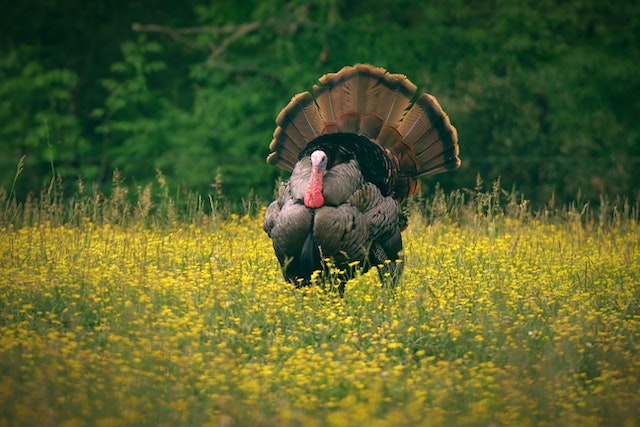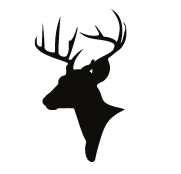How to Attract Turkeys for Hunting: Tips and Techniques

Turkey hunting is a popular activity among hunters, and attracting turkeys is an essential part of the process. Whether you are a seasoned hunter or a beginner, understanding how to attract turkeys can make all the difference in your success.
Attracting turkeys requires a combination of knowledge, patience, and skill, but with the right techniques, anyone can increase their chances of a successful hunt.
One of the most important things to consider when trying to attract turkeys is their natural habitat. Turkeys prefer to roost in trees at night and spend their days foraging for food in open fields and wooded areas.
Understanding where turkeys are likely to be and what they like to eat can help hunters choose the best location for their hunt. Additionally, using decoys and turkey calls can be an effective way to mimic the sounds and movements of real turkeys and draw them in closer.
By using these techniques, hunters can increase their chances of attracting turkeys and having a successful hunt.
Understanding Turkeys
Turkeys are a popular game bird for hunters because of their elusive nature and challenging behavior. To attract turkeys for hunting, it’s important to understand their habitat requirements and feeding habits.
Habitat Requirements
Turkeys prefer open woodlands with a mix of mature trees, shrubs, and grassy areas. They need access to water and roosting trees for safety. Turkeys also need a variety of food sources throughout the year, such as insects, berries, seeds, and nuts.
During the breeding season, turkeys require areas with dense cover for nesting and brood rearing. They also need a mix of open areas and cover for displaying and mating behavior. In the fall, turkeys focus on finding food sources to build up their fat reserves for the winter.
Do Turkeys Eat Acorns?
Yes, turkeys do eat acorns. Acorns are a valuable food source for turkeys, especially in the fall when they are trying to build up their fat reserves. However, not all acorns are created equal. Turkeys prefer acorns from white oak trees over red oak trees because they have a lower tannin content and are easier to digest.
In conclusion, understanding turkeys’ habitat requirements and feeding habits is essential for attracting them for hunting. By providing the right mix of food sources, cover, and roosting trees, hunters can increase their chances of a successful hunt.
Attracting Turkeys
When it comes to turkey hunting, attracting turkeys to your hunting area is key. Here are some tips on how to attract turkeys:
Food Sources
Turkeys are omnivorous birds and will eat a variety of foods. Planting food plots with crops such as clover, wheat, and soybeans can attract turkeys. Additionally, scattering corn, millet, or other grains can also be effective. It is important to note that turkeys will not eat spoiled or moldy food, so make sure to keep food sources fresh.
Water Sources
Turkeys need water to survive, so providing a reliable water source can attract them to your hunting area. Natural water sources such as streams, ponds, or lakes can be effective, but if those are not available, you can create an artificial water source by digging a small pond or placing a large container filled with water.
Roosting Sites
Turkeys roost in trees at night, so providing suitable roosting sites can attract them to your hunting area. Mature trees with large branches are ideal for roosting. If there are not enough trees in your hunting area, you can create artificial roosting sites by building roosting poles or platforms.
Overall, providing food, water, and roosting sites can attract turkeys to your hunting area. It is important to note that attracting turkeys is not a guarantee that you will have a successful hunt, but it can increase your chances.
Decoy Strategies
Types of Decoys
There are several types of decoys that hunters can use to attract turkeys. The most common types of decoys are:
- Hen decoys: These decoys mimic the appearance of a female turkey and are effective in attracting male turkeys during the breeding season.
- Jake decoys: These decoys mimic the appearance of a young male turkey and can be used to attract both male and female turkeys.
- Tom decoys: These decoys mimic the appearance of a mature male turkey and are effective in attracting other male turkeys during the breeding season.
Decoy Placement
The placement of decoys is crucial for attracting turkeys. Hunters should place their decoys in a visible location, such as an open field or near a food source. It is also important to place the decoys in a way that mimics the natural behavior of turkeys.
When using hen decoys, hunters should place them in a way that suggests the hen is feeding or resting. Jake and tom decoys should be placed in a way that suggests they are challenging or courting the hen decoy.
Hunters should also consider the wind direction when placing their decoys. Turkeys have a keen sense of smell and will avoid areas where they detect human scent. Placing decoys downwind from the hunter can help to conceal their scent and increase their chances of success.
In conclusion, using decoys can be an effective strategy for attracting turkeys during hunting season. Hunters should choose the appropriate type of decoy and place it in a visible location that mimics the natural behavior of turkeys.
By following these simple tips, hunters can increase their chances of success and have a more enjoyable hunting experience.
Calling Techniques
Types of Calls
There are three main types of turkey calls that hunters can use: box calls, slate calls, and mouth calls. Each type of call produces a different sound, and hunters often use a combination of calls to attract turkeys.
Box calls are the most popular type of call and are easy to use. They consist of a wooden box and a paddle that is moved back and forth to create a sound. Slate calls are similar to box calls but use a slate surface and striker to produce a sound.
Mouth calls, also known as diaphragm calls, are placed in the hunter’s mouth and produce a sound when air is blown through them.
Calling Tips
To attract turkeys, hunters should use a variety of calls and techniques. Here are some tips to keep in mind:
- Start with soft calls and gradually increase the volume to mimic a turkey’s natural behavior.
- Use different calls to mimic different turkey sounds, such as clucks, purrs, and yelps.
- Use calls sparingly and wait at least 15-20 minutes between each call to give turkeys time to respond.
- Use cover to conceal your movements and avoid being seen by turkeys.
- Be patient and wait for turkeys to come to you instead of chasing after them.
By using the right calls and techniques, hunters can attract turkeys and increase their chances of a successful hunt.
Hunting Tips
Scouting
Before hunting turkeys, it’s important to scout the area and look for signs of their presence. Look for tracks, droppings, and feathers. Listen for their calls early in the morning or late in the evening. If possible, set up trail cameras to monitor their movements and patterns.
Concealment
Turkeys have excellent eyesight and can detect movement from a distance. It’s important to conceal yourself well when hunting. Wear camouflage clothing that matches the environment and use a turkey blind or natural cover to hide behind. Avoid making sudden movements and keep your body still.
Shot Placement
When hunting turkeys, shot placement is crucial. Aim for the head and neck area, as this is the most vulnerable spot. Avoid shooting at the body, as this can result in a wounded bird that may fly away and be difficult to find. Use a shotgun with a tight choke and #4 or #5 shot for the best results.
Remember to always follow local hunting regulations and safety guidelines. Happy hunting!
Frequently Asked Questions
How to get turkeys to roost on your property
To get turkeys to roost on your property, you need to provide them with a safe and secure place to rest. Turkeys prefer to roost in tall trees that offer protection from predators. You can also create roosting structures that mimic natural roosting sites. Make sure to provide plenty of branches and cover for the turkeys to feel safe.
What is the best attractant for turkeys?
The best attractant for turkeys is a combination of natural food sources and artificial attractants. Some popular attractants include corn, wheat, and sunflower seeds. You can also use decoys and calls to lure turkeys into your hunting area. However, it’s important to note that using attractants is not a guarantee of success and should be used in conjunction with other hunting techniques.
What foods attract turkeys?
Turkeys are omnivores and will eat a variety of foods, including insects, berries, seeds, and small animals. Some popular food sources for turkeys include acorns, corn, and wheat. It’s important to provide a variety of food sources to attract turkeys to your property.
How do you attract turkeys fast?
To attract turkeys fast, you can use calls and decoys to lure them into your hunting area. Make sure to use a variety of calls, including yelps, clucks, and purrs, to mimic the sounds of a turkey flock. You can also set up decoys to make your hunting area more attractive to turkeys. However, it’s important to note that attracting turkeys fast is not a guarantee of success and should be used in conjunction with other hunting techniques.
Conclusion
In conclusion, attracting turkeys for hunting requires a combination of patience, skill, and knowledge. Hunters need to understand turkey behavior, habitat, and food sources to increase their chances of success. By using the right calls, decoys, and scouting techniques, hunters can lure turkeys into their hunting area.
It is important to note that hunting should always be done ethically and responsibly. Hunters should respect the natural environment and follow all hunting laws and regulations. They should also prioritize safety and never take risks that could harm themselves or others.
Overall, attracting turkeys for hunting can be a rewarding experience for those who are willing to put in the effort and dedication. With the right tactics and mindset, hunters can increase their chances of success and enjoy the thrill of the hunt.
